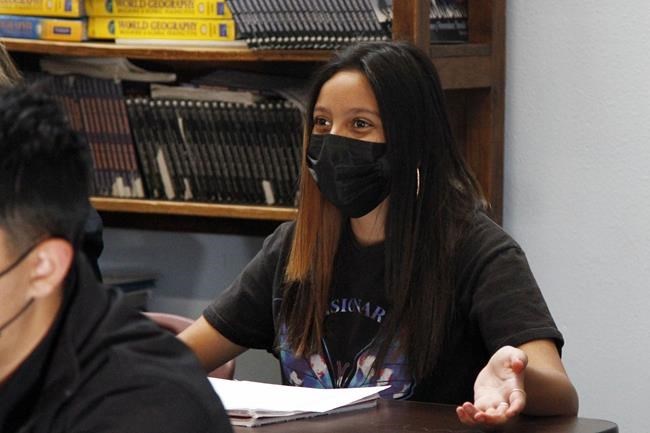PHOENIX (AP) — Latino students should be a federal funding priority after they fell behind during the coronavirus pandemic despite making notable educational gains in recent decades, leaders with the largest U.S. Hispanic civil rights and advocacy group said Monday.
“There is funding there,” said Amalia Chamorro, who oversees educational policy for UnidosUS, formerly the National Council of La Raza. “We need to make sure it is directed to students with the most needs.”
An Associated Press analysis of state and U.S. data last year found the federal government had provided $190 billion in pandemic aid to schools, four times more than what the U.S. Education Department spends on K-12 schools in a typical year.
A new report on Latino student access released by UnidosUS at its current gathering in San Antonio says students of color and low-income students faced the most daunting challenges during the pandemic because of problems like a lack of internet access in their homes when classes were being taught online.
This report comes while schools across the nation struggle to recover from the pandemic.
“We cannot allow hard won educational gains to be reversed, yet we also know that the pre-pandemic status quo was not working as well as it should,” it says.
The report said Latino parents described their frustrations in focus groups that UnidosUS held last year as they told of their children being distracted and hungry for social interaction.
It cited a 2021 survey that found more than 70% of Latino parents say their children suffered a learning challenge during the pandemic, and many worry whether they can support them in their school struggles.
“We've hit a speed bump and now we have to get back on track,” said Eric Rodriguez, UnidosUS vice president for policy and advocacy. “We are especially worried about English learners.”
The transition to remote instruction was especially difficult for English learners because the majority of them come from low-income families and tend to have parents with limited levels of education, the report said. They are also more likely to be homeless and less likely to have high-speed internet access.
The report said a survey of teachers by the Government Accountability Office found that teachers with more than 20% English learner students in the 2020-21 school year found the children were struggling with understanding their lessons and even accessing school meals.
Despite the struggles, the report says K-12 Latino students have made important gains over the last three decades, as their proportion in U.S. schools has tripled from 9% in 1984 to 28% now. High school graduation rates for Latinos reached an all-time high of nearly 82% in 2019, despite inequalities and barriers to success.
“The course of the next two decades will be determined by the decisions we make today,” it concludes.
Anita Snow, The Associated Press




